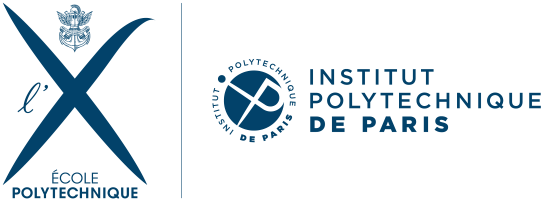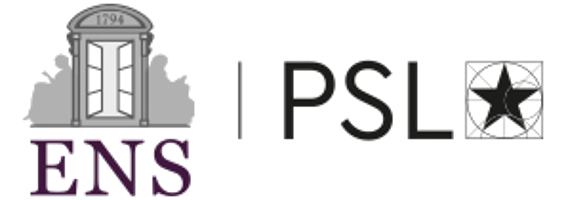Ensemble Methods for Regression#
Apply ordinary least squares;
Apply bias-variance decomposition to understand the overfit-underfit tradeoff;
Select regularization hyper-parameters with cross-validation;
Test model prediction skills.
Combining several models together;
Understand the principles behind bootstrapping and boosting;
Get intuitions with specific models such as random forest and gradient boosting;
Identify the important hyperparameters of random forest and gradient boosting decision trees as well as their typical values.
Ensemble methods:
Bagging;
Random forest;
Voting / Stacking;
Bayesian methods for non-parametric regression;
Boosting.
Intuitions on tree-based methods#
Tree-based methods partition the feature space into a set of rectangles, and then fit a simple model (like a constant) in each one.
The optimal partition is usually approximated by a greedy (iterative) algorithm.
Tree depth is a tuning parameter governing the model’s complexity, and the optimal tree size should be adaptively chosen from the data.
Intuition on ensemble of tree-based methods#
See Scikit-learn course - Intuitions on ensemble of tree-based models.
The two tasks of ensemble learning#
Develop a population of base learners from the training data;
Combine them to form a composite predictor.
Ensemble methods based on bootstrapping#
With cross-validation and boostrapping (shuffled version), we have resampled the training data to assess the accuracy of a prediction or a parameter estimate.
Bagging (Bootstrap AGGregatING) is the use of bootstrapping to improve the estimate or prediction itself.
Random forests improve on bagged trees by reducing the correlation between sampled trees.
Bagging method#
Given training data \(\mathbf{Z} = \{(x_1, y_1), \ldots, (x_N, y_N)\}\),
Get \(B\) boostrap samples \(\mathbf{Z}^{*b}, b = 1, \ldots, B\);
Fit a model \(\hat{f}^{*b}\) to each bootstrap sample;
Given a new input \(x\), generate predictions \(\hat{f}^{*b}(x)\) from each model;
Average the predictions to get the bagging prediction:
Why bagging?#
The base estimator \(\hat{f}\) is too complex and overfits;
Each bootstrap estimate \(\hat{f}^{*b}\) also overfits;
But averaging them reduces their there variance and thus their tendency to overfit.
Bagging usage#
For regression / classification;
The base estimator can be any model;
But it works especially well for high-variance, low-bias base estimator such as trees;
The number of models \(B\) is a hyperparameter controlling the regularization;
Drawback: A bagged tree is no longer a tree which limits interpretation.
Bagging example#
Generating a synthetic dataset for the sake of the example#
First, we will generate a simple synthetic dataset to get insights regarding bootstraping.
# Numerical analysis modules
import numpy as np
import pandas as pd
# Default number of training samples
N = 30
# Default noise standard deviation
sigma = 4.
# Initialize random number generator
rng = np.random.RandomState(1)
# Plot configuration
xlabel = 'Input'
ylabel = 'Target'
xlim = 3.5 * np.array([-1, 1])
def f(x):
noise = sigma * rng.randn(len(x))
y = x**3 - 0.5 * (x+1)**2 + noise
y /= y.std()
return y
def generate_data(n_samples=N):
"""Generate synthetic dataset. Returns `data_train`, `data_test`,
`target_train`."""
x_min, x_max = xlim * 3 / 3.5
# Generate train data
x_train = rng.uniform(x_min, x_max, size=n_samples)
y_train = f(x_train)
input_train = pd.Series(x_train, name=xlabel)
target_train = pd.DataFrame(y_train, index=x_train, columns=[ylabel])
target_train.index.name = input_train.name
# Generate test data
x_test = np.linspace(*xlim, num=300)
y_test = f(x_test)
input_test = pd.Series(x_test, name=xlabel)
target_test = pd.DataFrame(y_test, index=x_test, columns=[ylabel])
target_test.index.name = input_test.name
return input_train, input_test, target_train, target_test
# Plot modules
import matplotlib.pyplot as plt
import holoviews as hv
hv.extension('bokeh')
import hvplot.pandas
import panel as pn
# Generate training set
input_train, input_test, target_train, target_test = generate_data(
n_samples=N)
# Plot training set
ylim = xlim
kwargs_plot_train = dict(size=40, xlim=xlim, ylim=ylim)
target_train.hvplot.scatter(title='Synthetic training dataset', width=600,
**kwargs_plot_train)
Individual predictions#
The relationship between target and the input is nonlinear.
Let us first see how an individual OLS and an individual decision tree perform.
# Machine-learning modules
from sklearn import linear_model, tree, preprocessing, pipeline, metrics
# Make these estimators available
linear_reg = linear_model.LinearRegression()
spline_reg = pipeline.make_pipeline(
preprocessing.SplineTransformer(n_knots=4, degree=1), linear_reg)
tree_reg = tree.DecisionTreeRegressor(max_depth=3, random_state=0)
base_estimators = [linear_reg, tree_reg, spline_reg]
def get_individual_prediction(base_estimator):
# Fit estimator
X_train = input_train.values[:, None]
y_train = target_train[ylabel].values
base_estimator.fit(X_train, y_train)
# Get prediction from test input
X_test = input_test.values[:, None]
y_pred = base_estimator.predict(X_test)
# Get test score
y_test = target_test[ylabel].values
score_test = base_estimator.score(X_test, y_test)
return y_pred, score_test
def plot_individual_prediction(base_estimator):
y_pred, score_test = get_individual_prediction(base_estimator)
target_pred = pd.DataFrame(y_pred, index=input_test, columns=[ylabel])
# Plot
p = target_train.hvplot.scatter(label='Training set', **kwargs_plot_train)
title = 'R2 = {:.2f}'.format(score_test)
p *= target_pred.hvplot(line_width=3, label='Simple prediction',
title=title)
return p
select_base_estimator = pn.widgets.Select(
name='Base estimator', options=base_estimators, width=750)
pn.interact(plot_individual_prediction, base_estimator=select_base_estimator)
Generating bootstrap samples#
Randomly draw \(N\) points from \(\mathbf{Z}\) with replacement. To do so:
Use a random number generator to draw \(N\) integers from \(1\) to \(N\). The same integer may be drawn multiple times (replacement);
Take these integers as indices to select input-output pairs in \(\mathbf{Z}\);
Repeat \(B\) times to get \(B\) samples \(\mathbf{Z}^{*b}\), each containing \(N\) points.
Thus, the bootstrap sample will contain some data points several times while some of the original data points will not be present.
However, a smaller number points may be drawn with or without replacement.
This is illustrated below, where the number of points per boostrap sample is max_samples and where replace controls whether points are replaced or not.
def get_bootstrap_sample(max_samples=N, replace=True):
# Get random indices
bootstrap_indices = rng.choice(N, size=max_samples, replace=replace)
# Generate boostrap sample
input_b = input_train.iloc[bootstrap_indices]
target_b = target_train.iloc[bootstrap_indices]
# Get fraction of unique samples
fraction = len(np.unique(bootstrap_indices)) / N
return input_b, target_b, fraction
def plot_bootstrap_sample(b, max_samples=N, replace=True):
input_b, target_b, fraction = get_bootstrap_sample(max_samples, replace)
# Plot with hvplot
p = target_train.hvplot.scatter(label='Training set', **kwargs_plot_train)
title = 'Percentage of unique samples: {}%'.format(int(fraction * 100))
p *= target_b.hvplot.scatter(
label='Bootstrap sample', title=title,
size=140, alpha=0.5, marker='circle', fill_color=None, line_width=4)
return p
button = pn.widgets.Button(name='Resample bootstrap', button_type='primary')
pn.interact(plot_bootstrap_sample, b=button, max_samples=np.arange(N) + 1)
Observe that the variations all share common points with the original dataset.
The percentage of different training points found in the bootstrap sample is given in the title.
Some of the points are randomly resampled several times and appear as darker orange circles.
Bootstrapping predictions#
Now, we can fit an estimator for each of these datasets and they all shall be slightly different as well.
We can use each of the estimator to predict on the testing data.
They shall give slightly different predictions.
# Default number of estimators
N_ESTIMATORS = 5
def get_bootstrap_predictions(
base_estimator, n_estimators, max_samples, replace):
# Get bootstrap predictions
X_test = input_test.values[:, None]
y_preds = np.empty((n_estimators, X_test.shape[0]))
for b in range(n_estimators):
input_b, target_b, _ = get_bootstrap_sample(max_samples, replace)
X_b = input_b.values[:, None]
y_b = target_b[ylabel].values
base_estimator.fit(X_b, y_b)
y_preds[b] = base_estimator.predict(X_test)
return y_preds
def plot_bootstrap_predictions(b, base_estimator=linear_reg,
n_estimators=N_ESTIMATORS):
y_preds = get_bootstrap_predictions(base_estimator, n_estimators, N, True)
p = target_train.hvplot.scatter(label='Training set', **kwargs_plot_train)
for b in range(n_estimators):
target_pred_b = pd.DataFrame(
y_preds[b], index=input_test, columns=[ylabel])
label = 'Bootstrap prediction {}'.format(b)
p *= target_pred_b.hvplot(line_dash='dashed', label=label)
return p
button_multi = pn.widgets.Button(
name='Resample all bootstraps', button_type='primary')
pn.interact(plot_bootstrap_predictions, b=button_multi,
base_estimator=select_base_estimator,
n_estimators=np.arange(N * 2) + 1)
Aggregating#
Once our \(B\) estimators are fitted and we are able to get \(B\) predictions, one for each.
In regression, the most straightforward way to combine those predictions is just to average them.
We can plot the averaged predictions from the previous example.
def plot_bagging(b, base_estimator=linear_reg, n_estimators=N_ESTIMATORS,
plot_bootstrap_predictions=True):
y_preds = get_bootstrap_predictions(base_estimator, n_estimators, N, True)
# Get bagged prediction
y_pred_bag = y_preds.mean(0)
target_pred_bag = pd.DataFrame(
y_pred_bag, index=input_test, columns=[ylabel])
# Get test score
y_test = target_test[ylabel].values
score_test = metrics.r2_score(y_test, y_pred_bag)
p = target_train.hvplot.scatter(label='Training set', **kwargs_plot_train)
title = 'R2(bagging) = {:.2f}'.format(score_test)
p *= target_pred_bag.hvplot(line_width=3, label='Bagging prediction',
title=title)
# Add bootstrap predictions
if plot_bootstrap_predictions:
for b in range(n_estimators):
target_pred_b = pd.DataFrame(
y_preds[b], index=input_test, columns=[ylabel])
label = 'Bootstrap prediction {}'.format(b)
p *= target_pred_b.hvplot(line_dash='dashed', label=label)
return p
pn.interact(plot_bagging, b=button_multi,
base_estimator=select_base_estimator,
n_estimators=np.arange(N * 2) + 1)
The blue line shows the averaged predictions, which would be the final predictions given by our “bag” of regressors.
Note that the predictions of the ensemble is more stable because of the averaging operation.
As a result, the bag of estimators as a whole is less likely to overfit than the individual trees.
Boostrap estimates#
As with cross-validation, we can directly plot the distribution of parameter estimates from the bootstrap estimators to evaluate the variability of the estimates.
# Boostrap configuration with spline base estimators
base_estimator = spline_reg
n_estimators = N_ESTIMATORS
max_samples = N
replace = True
# Get bootstrap estimates
X_test = input_test.values[:, None]
coefs = []
b = 0
while b < n_estimators:
input_b, target_b, _ = get_bootstrap_sample(max_samples, replace)
X_b = input_b.values[:, None]
y_b = target_b[ylabel].values
base_estimator.fit(X_b, y_b)
coef = base_estimator[1].coef_
if (np.abs(coef) < 1.e10).all():
coefs.append(coef.copy())
b += 1
df_coefs = pd.DataFrame(coefs)
df_coefs.index.name = 'Spline'
df_coefs.index.name = 'Coefficients'
df_coefs.hvplot.box(invert=True, xlabel='Spline', ylabel='Coefficient',
title='Coefficient importance and variability')
Bootstrapping features (any base estimator)#
Input features can also be bootstrapped to reduce the correlation between boostrapped estimators and further decrease the variance of the estimator (often at the cost of a small increase in bias).
Introduction to random forests (restricted to trees)#
As with bagging, the prediction of the ensemble is also given as the averaged prediction of the individual classifiers;
Both samples and features are bootstrapped;
However, the bootstrapping of features occurs at each split of a decision tree, i.e:
Select, before each split, \(m < p\) of the input features at random as candidates for splitting;
Lower variance and improve predictions by increasing the number of trees, but at the cost of fitting and prediction time.
Advantages of random forests#
Further reduce the variance compared to bagging;
On many problems the performance of random forests is very similar to boosting, and they are simpler to train and tune;
Often do remarkably well with very little tuning required making it a good off-the-shelf method.
Model averaging and stacking (committee-based approaches)#
Aggregating different models with:
An average (uniform weights);
Weights proportional to the posterior probability of each model (Bayesian model);
Optimal weights (stacking).
Goal of aggregation#
An alternative way to regularize: aggregating weak estimators;
Increase the number of weakly correlated estimators to lower the variance;
Avoid having to find the model that best performs on a given dataset;
Sometimes outperform the prediction performance of each individual model.
Voting#
In bagging, the estimates vary but the definition of the base model is unchanged;
Instead, one can average different models (e.g. a Ridge, a decision tree and a neural network);
But why should the model be uniformly weighted when a Bayesian model predicts different weights?
Stacked generalization (Stacking)#
Method:
Make predictions from each individual estimator;
Stack them together as a new input matrix;
Train a final estimator with this matrix as input using cross-validation:
e.g. with leave-one out CV, minimize the average error between the target \(i\) and the final prediction from the individual predictions from input \(i\) by base estimators trained on the dataset with the input \(i\) removed.
Advantage:
Stacking provide an alternative by combining the outputs of several learners, without the need to choose a model specifically;
The performance of stacking is usually close to the best model;
It sometimes it can outperform the prediction performance of each individual model.
Drawback:
Computationally expensive;
Less interpretable than individual predictions.
Ensemble based on boosting#
Seems similar to bagging/voting: combines the predictions of many “weak” classifiers to produce a powerful “committee”;
Yet very different: models are sequentially trained on inputs with evolving weights;
As a consequence, boosting can reduce the bias when bagging only reduce the variance.
To go further#
Bayesian models (Bishop 2006);
Relationship between bootstrap, maximum likelihood and Bayesian methods (Chap. 8 in Hastie et al. 2009);
More on boosting methods and analytical results (Chap. 10 in Hastie et al. 2009);
Versions of ensemble methods for classification (Hastie et al. 2009).
References#
Credit#
Contributors include Bruno Deremble and Alexis Tantet. Several slides and images are taken from the very good Scikit-learn course.








